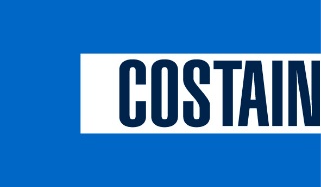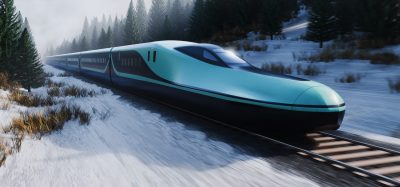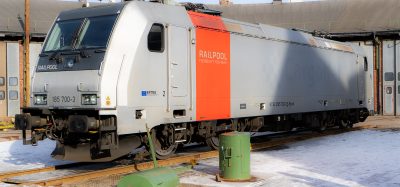The Nordic rolling stock market
Posted: 31 May 2006 | | No comments yet
A steady succession of small rolling stock orders is keeping interest alive in the Nordic market.A decade ago, the Nordic countries were seen as a beacon of hope by Europe’s rolling stock manufacturers,with some large replacement orders coming up. But those orders are now behind us, with the Italian manufacturer Ansaldo-Breda winning many of them at competitive prices. Finland, Norway and Denmark (this article excludes Sweden) all boast modern fleets and the orders coming up are tending to be in niche areas of the market.
A steady succession of small rolling stock orders is keeping interest alive in the Nordic market.A decade ago, the Nordic countries were seen as a beacon of hope by Europe’s rolling stock manufacturers,with some large replacement orders coming up. But those orders are now behind us, with the Italian manufacturer Ansaldo-Breda winning many of them at competitive prices. Finland, Norway and Denmark (this article excludes Sweden) all boast modern fleets and the orders coming up are tending to be in niche areas of the market.
A steady succession of small rolling stock orders is keeping interest alive in the Nordic market.A decade ago, the Nordic countries were seen as a beacon of hope by Europe’s rolling stock manufacturers,with some large replacement orders coming up.
But those orders are now behind us, with the Italian manufacturer Ansaldo-Breda winning many of them at competitive prices. Finland, Norway and Denmark (this article excludes Sweden) all boast modern fleets and the orders coming up are tending to be in niche areas of the market.
Pendolinos in Finland
In Finland, the country’s prime inter-city routes are now in the hands of Pendolino tilting trains built by Alstom in Italy.After an extended period of pre-series running to ensure the Italian train was able to withstand the rigorous Nordic winter, the initial order from VR (Finnish Railways) with Fiat Ferroviaria (as it was then before the takeover by Alstom) was for eight trains.The first train entered service on the Helsinki-Turku route in 1995.
Another eight trains were added to the order and the last of these arrives in Finland this year. Over the past decade, the number of routes covered by these trains has gradually expanded: one of the most recent added to the network, the Helsinki-Joensuu route, was inaugurated in November 2005.
Deliveries are also drawing to a close on a batch of 16 diesel railcars being supplied by CKD Vagonka of the Czech Republic. Built under a €26.5 million contract, the railcars replace an earlier design by another manufacturer that proved unsuitable; these earlier vehicles were disposed of in the Baltic republics. The new 63-seater railcars are able to run at 120km/h and have been used to replace expensive-to-operate loco-hauled formations on cross-country routes. The first vehicles were introduced last year on the Joensuu-Pieksämäki line, with the Joensuu-Nurmes, Karjaa-Hanko, Savonlinna- Parikkala and Tampere-Haapamäki routes following.
Talgo Oy
Finland’s domestic rolling stock factory at Otamäki has been kept open with a series of small orders for inter-city stock. Formerly owned by Oy Transtech, the factory was taken over by Talgo of Spain: the two countries’ railway systems have an affinity as both change gauges on the border. In the 1990s, the factory gained a reputation for its high-quality double-deck inter-city stock, and last year it pushed the technology further by rolling out a prototype double-deck electric multiple-unit with through gangways on both levels (normally on doubledeck stock, only the upper level has a through gangway). This prototype train was funded by the Finnish National Technology Agency with help from the European Union.
While the technology in this prototype was impressive, the ‘bread-and-butter’ orders have been thin on the ground. In June last year, delivery of a €6.4 million order for 15 doubledeck car carrier wagons was completed. Ordered by VR in 2003, the car carriers are for use on overnight services linking the north of Finland with the capital. The 31.6m-long vehicles are able to run at 160km/h and can each carry 12 vehicles.
Talgo has eked out the new-build work by diversifying into refurbishment, with orders covering metro and tram stock at work in the Finnish capital.With refurbishment helping to keep the factory busy, at the end of last year Talgo Oy gave up freight wagon manufacture, a notoriously low-margin sector. The rights to the company’s designs were sold to K Industrier of Malmö in Sweden.
On the new-build side, Talgo Oy has been working on an order for 20 inter-city sleeping cars for the Helsinki-Rovaniemi north-south route. The first two vehicles in this €58 million order were delivered in January 2006. These are highspecification vehicles, with the eight cabins on the upper deck having their own toilets and showers. The eleven cabins on the lower and intermediate decks have shared toilets and showers; the showers feature underfloor heating. All the cabins have wash basins, air conditioning and smoking is not permitted.
Efforts have been made to accommodate people with special needs. One of the cabins on the lower deck is designed for disabled people and there is an adjacent toilet for the disabled. The vehicle has facilities for people travelling with pets and also for those with allergies. For parties and families travelling together, some of the cabins on the lower deck can be doubled up with an interlinking door to accommodate four people.
Talgo Oy was looking for more new-build work to fill the factory once the sleepers were finished. The lifeline came in the shape of an order for a further 20 double-deck inter-city coaches. In January 2006,VR announced it would be leasing these vehicles, which are due to be delivered in 2007-08.
Copenhagen suburban units
In Denmark, deliveries on one of the largest Scandinavian rolling stock orders of recent times are now drawing to a close. The trains in question are the Siemens-built EMUs for the Copenhagen S-Tog, which feature a remarkable design. By virtue of having several short single-axle carriage units which fit together, the train snakes round curves and makes the most of the loading gauge, allowing extra wide saloons and high seating capacity.
The order was originally for 120 eight-car units, designated SA. However, four years ago the order was varied to give some shorter trains more flexibility in the fleet. Instead of 120 SA units in total, there are now set to be 105 SA units and in addition 31 SE class four-car units. The idea was that the SE units would be used on the Hellerup-Ny Ellebjerg Ringbane, but traffic on this route has prospered and for much of the time demand now justifies a longer train. Two SE units are equivalent to one SA unit but the shorter units can run singularly during quiet periods.
The first SE units were introduced on the S-Tog’s Route Bx, the line between Høje Tåstrup and Klampenborg, in June 2005.






